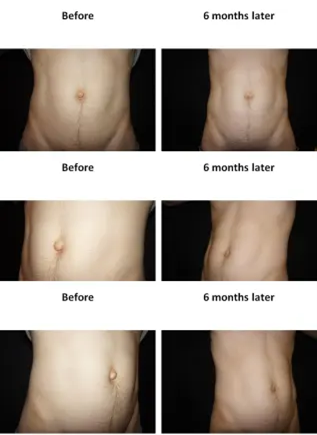What is Umbilicoplasty?
Umbilicoplasty is a specialized cosmetic surgical procedure designed to reshape, reposition, or reconstruct the umbilicus, commonly known as the belly button. The surgeon endeavours to enhance the aesthetic appearance although it is of subjective nature following a detailed discussion with the patient.
People may seek umbilicoplasty for various reasons – from aesthetic dissatisfaction with the shape or size of their belly button to reconstructive needs following pregnancy , abdominal surgery , laparoscopic surgery or abdominoplasty. It is often performed as a standalone procedure but is also commonly done alongside other body contouring surgeries or along with umbilical hernia repair.
Different Types of Umbilicus (Belly Button Shapes)
Belly buttons come in various shapes and sizes, all of which are medically normal, but cosmetic preferences can vary. Here are some common types:
- Innie: The belly button is recessed and sits inward. It is the most common and generally considered aesthetically desirable.
- Outie: The umbilicus protrudes outward. This could be due to excess skin, fat, variations in the underlying muscles and adjoining fascial structure e.g. rectus muscles and linea alba or could be associated with a small umbilical hernia.
- Horizontal Belly Button: A slit-like, side-to-side opening. This is more common in older individuals or after pregnancies.
- Vertical Belly Button: An elongated, up-and-down appearance. Considered youthful and often idealized in fitness or fashion imagery.
- T-Shaped or U-Shaped: A wider, flatter appearance that may result from weight gain, pregnancy, or surgical scarring.
These shapes may be congenital or may develop over time due to changes in body structure, weight, multiply pregnancies, secondary umbilical hernia or medical procedures.
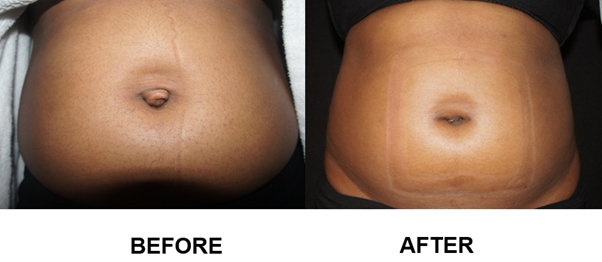
Common Issues Men and Women Face Due to Belly Button Appearance
While majority of population may accept the belly button as it is ,however some people get significantly affected by the variation in the shape of their belly button. Common complaints include:
- Self-consciousness in swimwear, sarees, crop tops, or fitness clothing.
- Embarrassment during intimate moments due to an unattractive or misshaped navel.
- Visible scars from surgeries like laparoscopies , abdominoplasty or laparotomies.
- Changes after pregnancy – the navel may become stretched, flattened, or irregular.
- Outie appearance in adulthood, which may be mistaken for hernias or fat deposits.
- Distortion after rapid weight loss, leaving the area wrinkled or hollowed.
These issues can lead to psychological distress, reduced confidence, and avoidance of psychosexual, social situations or certain clothing styles.
How Is It Treated – Natural vs. Surgical Methods
🔸 Important Considerations :
- Skin tone or elasticity (e.g., firming creams),
- Fading scars (e.g., silicone-based scar gels),
- Mild infections or piercings, which can be managed conservatively.
- No surgery and accept the tummy button without any surgical interventions
However, these do not address issues like a protruding umbilicus, stretched shape, or asymmetry. The underlying tissue cannot be altered without surgery.
🔹 Surgical Treatment – Umbilicoplasty at MACS Clinic
The procedure is typically short, minimally invasive, and performed by Mr. Shailesh Vadodaria under local anaesthesia with or without sedation. In some combined cases, general anaesthesia may be used. If there is an evidence of umbilical hernia along with issues with tummy button appearance then a combined procedure of repair of umbilical hernia and Umbilicoplasty should be considered.
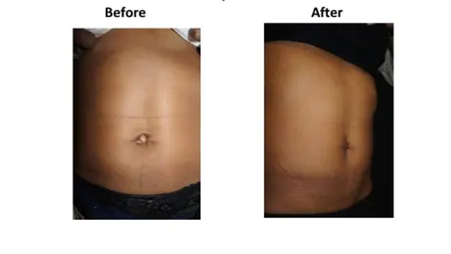
Step-by-Step Breakdown:
- Consultation & Planning: Mr. Vadodaria will evaluate your current anatomy, medical history, and aesthetic goals.
- Marking the Umbilicus: The area is marked by Mr. Vadodaria precisely to determine incision placement and the desired final shape in conjunction with a detailed discussion with patient in order to understand the realistic expectations.
- Incision: A small, discreet incision is made either around or within the natural folds of the navel.
- Reshaping: Excess skin or fat is removed, and internal structures may be adjusted.
- For outies, the protruding tissue is reduced.
- For large belly buttons, skin is tightened and contoured.
- Repositioning (if needed): The navel can be relocated slightly to align with abdominal symmetry, especially in combined surgeries.
- Closure: The skin closure is achieved with dissolving sutures.
The procedure takes around 30 to 60 minutes , and patients typically go home the same day.
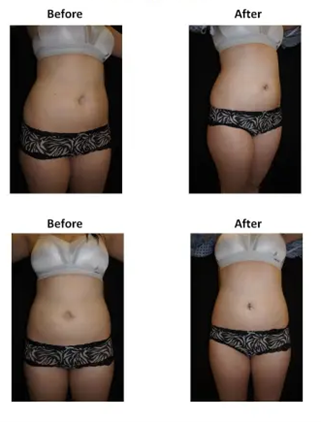
Post-Operative Care
Immediate Recovery:
- Mild swelling and bruising are normal for a few days.
- Patients may feel a slight pulling or tightness around the belly button.
- Pain is usually minimal and managed with analgesics prescribed by Mr. Vadodaria.
Care Instructions:
- Keep the area clean and dry – follow specific dressing instructions provided by Mr. Vadodaria
- Avoid strenuous activity for 2–3 weeks.
- Wear loose clothing to prevent friction or pressure on the healing site.
- Avoid swimming or soaking the area for at least 2 weeks.
Long-Term Recovery:
- Sutures may dissolve on their own.
- Scar appearance improves over 3–6 months and may be treated with topical silicone or laser if needed.
- Results could be long-lasting with a healthy lifestyle.
Can Umbilicoplasty Be Combined with Other Procedures?
Many patients opt to have umbilicoplasty as part of a broader body contouring plan, which may include:
- Tummy Tuck (Abdominoplasty) – to remove excess skin and fat while reshaping the navel.
- Liposuction – for contouring the midsection and enhancing the visibility of a newly shaped navel.
- Post-pregnancy Mummy Makeovers – combining breast and abdominal procedures.
- C Section – especially when the belly button has shifted or flattened because of pregnancy
Combining procedures minimizes the need for multiple recoveries.
Complications of Umbilicoplasty
As with all surgeries, potential risks include:
- Infection
- Bleeding or hematoma formation
- Scarring – though usually well-concealed, some may need later correction.
- Delayed wound healing
- Asymmetry or irregular shape – often minor and correctable
- Loss of umbilical definition (rare)
- Unsatisfactory outcome
- Unrealistic expectations
Why Do People Opt for This Procedure?
Men and women from all walks of life seek umbilicoplasty for various personal reasons:
- Body confidence – especially for those who want to wear fitted or revealing clothing.
- Reversal of pregnancy-related changes – where the navel becomes stretched or flat.
- Correction after prior surgery – including tummy tucks or hernia repairs.
- Social or professional demands – such as actors, models, and athletes.
- Aesthetic refinement – simply wanting a more pleasing or symmetrical belly button.
Why Choose MACS Clinic for Umbilicoplasty?
✔ Expertise: Mr. Shailesh Vadodaria, senior consultant plastic surgeon has experience of nearly 30 years
✔ Patient-Centric Care: We endeavour to treat every patient with empathy, discretion, and professionalism.
✔ Sterile Environment: Clean, state-of-the-art facilities ensure safety and comfort.
✔Cosmetic Consideration: We minimize scarring
✔ Quick Appointments & Efficient Recovery: Minimal downtime.
✔ CQC registered clinic with outstanding rating for patients’ care
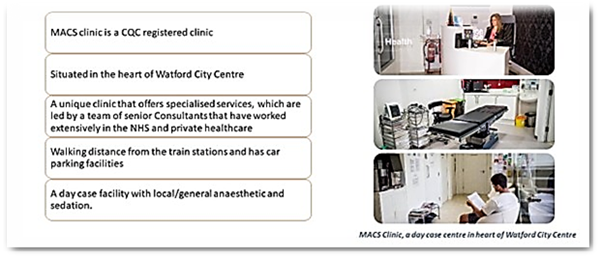
Contact MACS Clinic
- Phone: 020 7078 4378
- WhatsApp: 07792 648 726
- Email: enquiries@macsclinic.co.uk
- Website: www.macsclinic.co.uk
- BOOK a FREE Video Consultation: https://calendly.com/macsclinic/free-video-consultation?month=2025-01

